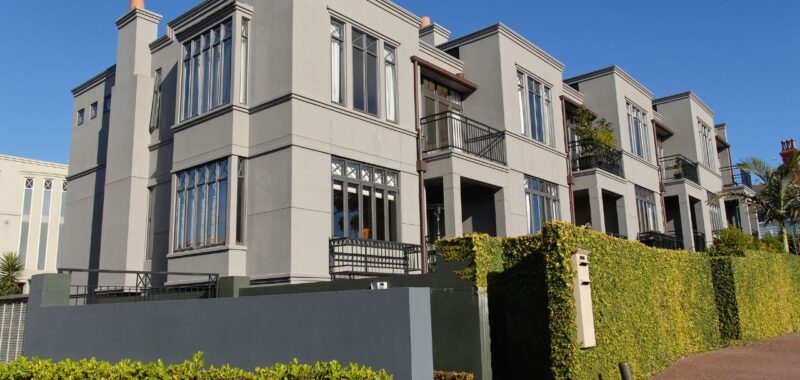New Zealand’s housing landscape has undergone a significant shift, with townhouses emerging as a key driver of growth, according to CoreLogic.
CoreLogic Chief Property Economist Kelvin Davidson said that townhouses now account for 45 per cent of all new dwellings across New Zealand, a dramatic increase from just 6 per cent in 2012.
“Of the 39,600 townhouses built across New Zealand since 2016, nearly 25,000 have been in Auckland, or approximately 63 per cent of the growth,” Mr Davidson said.
He said that this trend has been particularly pronounced in Auckland, where the share of townhouses has risen significantly since 2016, driven by the Unitary Plan and a shift towards more intensified housing on existing brownfields land.
“Christchurch still has a higher share of townhouses (nearly 24 per cent) than Auckland (16 per cent), but the latter’s growth in the past 7-8 years has been more significant,” he said.
The data shows that certain Auckland sub-markets have experienced substantial growth in townhouse stock.
Mr Davidson said that “the stock of townhouses has risen by roughly 50 per cent or more over the period since 2016 in Rodney, Papakura, Manukau, and Waitakere.”
However, he pointed out that the largest contributions to overall growth across Auckland have come from specific areas.
“The biggest contributions to the overall growth across Auckland have in fact been in Waitakere (33 per cent) – which includes areas such as Hobsonville – as well as Manukau (24 per cent), and Auckland City (19 per cent),” Mr Davidson said.

The rise of townhouses appears to be driven by both supply and demand factors.
Mr Davidson said that changing consumer preferences and developer responses have played a role, but affordability is also a key factor.
“Our latest median value for Auckland flats and townhouses is around $775,000, versus the figure for houses of about $1.12 million,” he said.
Looking at the broader national picture, Mr Davidson said there has been a gradual shift in housing stock composition over the past four decades.
“Back in 1984, standalone houses accounted for 80 per cent of all dwellings in New Zealand, but that’s now drifted down to 75 per cent,” he said.

Mr Davidson said the importance of townhouses in the current housing market, particularly in major cities.
“Given they use land well and can be built close to existing infrastructure such as transport links, they provide a different and cheaper option for a wider range of property buyers,” he explained.
Looking ahead, Mr Davidson said that current government initiatives would support continued growth in this sector.
“The obvious aim would be that the Government’s current housing supply rule changes – ‘Going for Housing Growth’ – will prove effective in keeping the townhouse building pipeline strong over the medium term, alongside general growth in all dwelling types,” he said.

